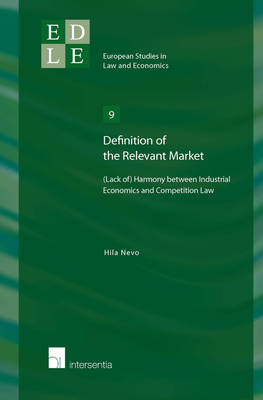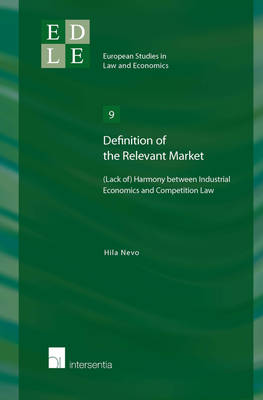
- Afhalen na 1 uur in een winkel met voorraad
- Gratis thuislevering in België vanaf € 30
- Ruim aanbod met 7 miljoen producten
- Afhalen na 1 uur in een winkel met voorraad
- Gratis thuislevering in België vanaf € 30
- Ruim aanbod met 7 miljoen producten
Zoeken
Definition of the Relevant Market
(Lack Of) Harmony Between Industrial Economics and Competition Law Volume 9
Hila Nevo
€ 75,45
+ 150 punten
Omschrijving
Market definition plays a critical role in EC competition law, as the first step of any investigation into the nature of competition in a given industry. While not an end in itself, the definition of the relevant market serves to identify those products and areas which effectively restrain the behaviour of the firms of interest, so that those firms could not act independently within the market. However, the main challenge in this process is to outline, which products should be included in the market, and which should be left outside its bounds.
Whereas traditional market definitions highlighted product characteristics, functionality and intended use as key provisions, modern competition-law inquiries attempt to reformulate the market delineation exercise in more economic terms. This book strives for a greater harmony between law and economics in defining antitrust markets. To that end, it brings together a wide array of quantitative tests routinely utilised by European competition authorities, such as price correlation analysis or the analysis of trade flows, together with more sophisticated quantitative measures such as merger simulation models or critical loss analysis. Taken together, this book proffers a comprehensive and protracted account of economic and empirical methods dominating the antitrust discourse to date, which carry the potential to revolutionise the quality of antitrust enforcement, its transparency, predictability and the accuracy of its results.Specificaties
Betrokkenen
- Auteur(s):
- Uitgeverij:
Inhoud
- Aantal bladzijden:
- 280
- Taal:
- Engels
- Reeks:
- Reeksnummer:
- nr. 9
Eigenschappen
- Productcode (EAN):
- 9781780681375
- Verschijningsdatum:
- 21/11/2014
- Uitvoering:
- Paperback
- Formaat:
- Trade paperback (VS)
- Afmetingen:
- 160 mm x 240 mm
- Gewicht:
- 467 g

Alleen bij Standaard Boekhandel
+ 150 punten op je klantenkaart van Standaard Boekhandel
Beoordelingen
We publiceren alleen reviews die voldoen aan de voorwaarden voor reviews. Bekijk onze voorwaarden voor reviews.











